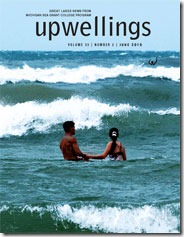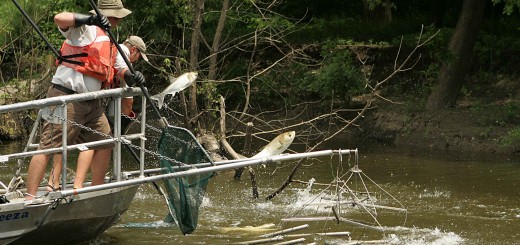Asian carp in Chicago waterways to be poisoned and counted
1
Government officials announced plans to dump fish poison into Chicago-area waterways for a second time to determine whether the Asian carp are moving nearer the Great Lakes. In Congress, however, a bipartisan group from Michigan, Minnesota and Wisconsin worries the control strategy is not enough and is pushing legislation for a more forceful response.
The announcement for the second area fish kill comes along with an updated Asian Carp Control Strategy Framework [PDF], also released yesterday, that calls for intense monitoring of these entrances to Lake Michigan to confirm and reduce the number of Asian carp upstream of the electric barriers that are meant to stop the fish’s entrance into the Great Lakes.
The plan involves making heavy use of the fish toxin rotenone, an odorless chemical that rapidly disperses through water. It enters the bloodstream of fish through the gills and causes death, but officials say it does not pose a serious threat to humans or other wildlife if applied safely.
The EPA said the poison will be distributed on May 20 to a two-mile stretch of the Little Calumet River south of downtown Chicago. It is an attempt to confirm whether the Asian carp DNA that has been discovered in the same area indicates carp are actually present there. A portion of the waterway could remain closed for as many as six days as crews collect the fish, according to the Milwaukee-Wisconsin Journal Sentinel.
Late last year, researchers detected Asian carp DNA in five locations north of the electric barrier, but there have not been any significant sightings. The first fish kill in December, which spanned a six-mile stretch, turned up one lone bighead carp.
In addition to the poison application, a second monitoring effort will begin next week on the North Shore Channel, which will utilize the traditional fish electro-shocking and netting technique.
A group of about a dozen legislators in Congress have praised the efforts being made and said the Obama administration is on the right track but that more needs to be done, such as closure of two Chicago locks to create an ecological barrier between Chicago’s surface waters and Lake Michigan (a contentious request because it endangers Chicago’s boating industry).
Great Lakes states have made several appeals to the Supreme Court to close the locks, but the High Court has thrice denied these requests. The group of Great Lakes legislators plan to continue pressing congressional leaders for a stronger response, as they believe the only way to save Great Lakes aquatic life and the multi-billion dollar fishing industry it supports is to create complete ecological separation.
Updated Asian Carp Control Strategy Framework [PDF] [AsianCarp.org] Fish poisoning of Chicago river aims to track carp [Milwaukee-Wisconsin Journal Sentinel] Paulsen, Klobuchar Call for Immediate Action to Halt Asian Carp, Protect Great Lakes [Congressman Erik Paulsen]
Image Credit: http://www.flickr.com/photos/notionscapital/ / CC BY 2.0














[…] to search for carp in the shipping channels. The locks were closed in such a fashion when officials introduced the fish toxin rotenone in the Little Calumet River on May […]